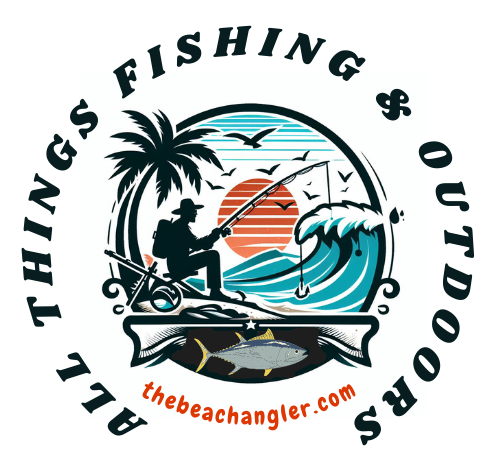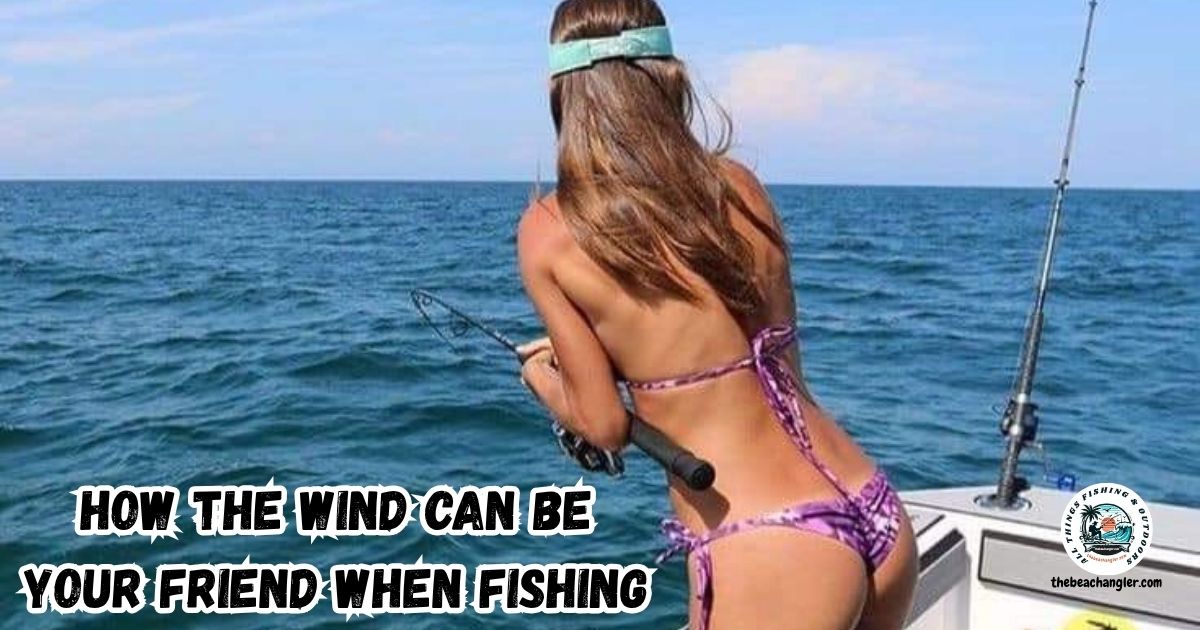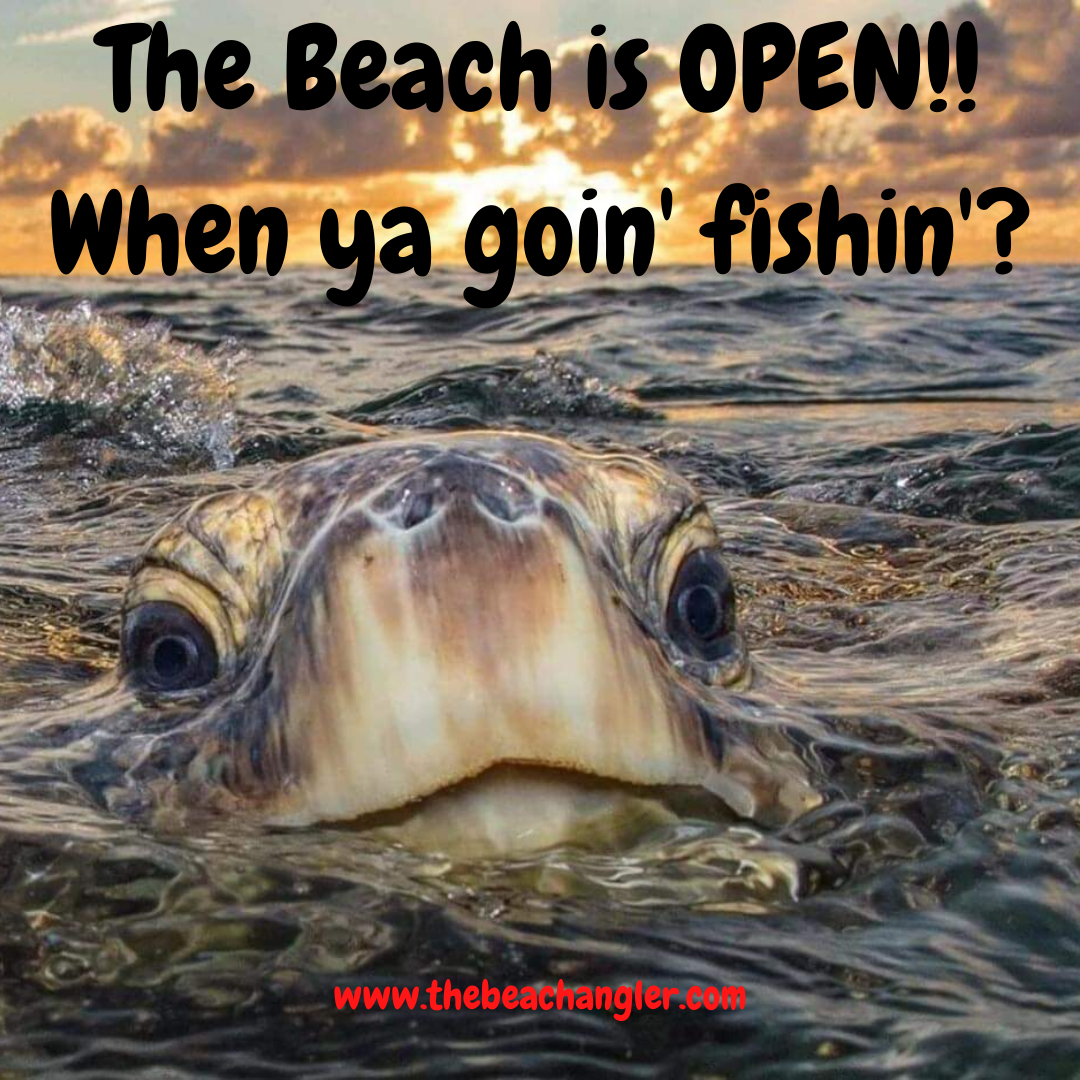Wind often turns out to be one of the most useful elements when I’m fishing inshore waters. While some anglers see a windy day as a problem, I treat it as a helpful tool for finding fish and getting more bites. Understanding how wind affects everything—from bait to fish movements—makes each trip a little smarter and, quite honestly, a lot more fun.
QUICK LOOK: Tips for Where and How to Fish in the Wind
WHERE TO FISH IN THE WIND:
- Points: Sticking out into the wind, points make natural current breaks and perfect ambush zones for hungry fish.
- Dropoffs: Wind-driven waves concentrate food along those ledges and sharp transitions, drawing a crowd of bait and predators.
- Marsh Edges: The wind gets water moving, stirring up shrimp and baitfish along grassy banks.
- Oyster Bars and Jetties: Structure gets steady water movement and a delivery of bait on windy days, keeping the fishing steady.
HOW TO FISH IN THE WIND:
- Heavier or Compact Lures: These manage to punch through the wind, holding to my target zone and keeping lure control sharp.
- Reaction Baits: In choppy, windy conditions, I use lures with plenty of flash or vibration—like spinnerbaits or rattling topwaters—since fish are likely to snap at anything that catches their eye.
- Weighted Jigheads: These keep soft plastics close to the strike zone even as wind and current try to pull them up and away.
- Aim Low: Sidearm or underhand casts keep bait hugging the water, dodging the wind, and landing right where I want.
- Upwind Casts: Casting upwind helps maintain tight contact with my lure, making subtle bites easier to pick up on even when the water’s rough.
- Crosswind Presentation: Tossing lures across the wind mimics the path of drifting bait, luring strikes from hungry fish staged along the break line.
- Braided Line: With its skinny profile and muscle, braided line is sensitive enough to pick up bites even when the wind puts a bow in the line.
- Longer Rods: Extra rod length gives me the distance I need, especially when casting into the wind.
- Larger Reels: More line and torque come in handy for fighting fish in heavy currents and waves.
- Sail Line: Harness the wind to take your saltwater trotline out and fish with multiple hooks.
How Wind Shapes Inshore Fishing Success
Inshore fishing depends on a mix of factors, with wind sitting right near the top of my list. Wind changes up water currents, surface conditions, and even what’s happening under the water. By learning to use wind instead of fighting it, I find better places to fish and stumble upon techniques that shine when the breeze is blowing.
Wind plays a big role in pushing baitfish and other food sources into certain areas. Predators like redfish, speckled trout, and snook will often gather where the wind piles up bait along shorelines, flats, or points. I keep an eye out for windblown zones since these spots tend to hold active fish, making for more action at the end of the line.
Currents kicked up by wind change how fish behave. Sometimes, the current carries the scent and movement of bait farther, drawing in predators. On really windy days, choppy water offers fish more cover, making them braver and, quite often, easier to catch.
Understanding Wind Direction and Strength
Knowing the wind’s direction and speed is always one of the first things I check when mapping out my day. Wind that blows directly into a shoreline, point, or grass flat usually gathers both bait and predatory fish. A gentle breeze can help me cast farther and use lighter lures, while a stiff wind might call for heavier tackle or some special casting techniques. I’ll pull up a weather app or just pay close attention to how the wind feels and sounds as it changes throughout the day, adjusting where I fish as the wind mixes it up.
- Onshore Wind: This wind pushes water and bait toward the bank, creating top-notch feeding spots for fish.
- Offshore Wind: Moves water away from shore, often pulling bait out of reach and making fish tougher to target from the bank.
- Crosswind: It slides bait sideways across points, sandbars, or open flats, sometimes making fish line up along structure to nab passing snacks.
- Variable or Changing Wind: This can lead to unpredictable fish behavior, so I’m always ready to change up tactics if needed.
Making the Most of Windblown Areas
I pay close attention whenever the wind blows directly onto the shoreline or structure. These windward banks, islands, or grass beds pull in bait, thanks to the waves and steady current, and fish know it.
Calm, protected spots might seem nice, but on a windy day, they usually aren’t nearly as productive. If I notice birds diving at the surface or spot nervous baitfish flipping around in the chop, odds are I’ve found one of those high-action zones.
When scouting these spots, I also look for:
- Points: Sticking out into the wind, points make natural current breaks and perfect ambush zones for hungry fish.
- Dropoffs: Wind-driven waves concentrate food along those ledges and sharp transitions, drawing a crowd of bait and predators.
- Marsh Edges: The wind gets water moving, stirring up shrimp and baitfish along grassy banks.
- Oyster Bars and Jetties: Structure gets steady water movement and a delivery of bait on windy days, keeping the fishing steady.
Adapting My Fishing Technique to the Wind
My fishing strategy gets a little upgrade when it’s windy out. For one, gear choices become more important. On calm days, I can get away with light tackle and finesse presentations. But stronger winds call for heavier lures and beefier lines to push through the breeze.
If my casts start losing distance or accuracy in the wind, I reach for aerodynamic lures, like spoons, jerkbaits, or weighted soft plastics, which hold their line through blustery gusts.
- Heavier or Compact Lures: These manage to punch through the wind, holding to my target zone and keeping lure control sharp.
- Reaction Baits: In choppy, windy conditions, I use lures with plenty of flash or vibration—like spinnerbaits or rattling topwaters—since fish are likely to snap at anything that catches their eye.
- Weighted Jigheads: These keep soft plastics close to the strike zone even as wind and current try to pull them up and away.
Casting Smarter: Techniques for Windy Days
Wind means I have to rethink how I cast. With the wind at my back, my lure flies extra far, making it easier to reach spooky fish lurking out and away. Casting directly into the wind takes more effort, so I keep my casts low to the water to cut down on air resistance and keep the lure flying straight. Fine-tuning how I cast into, across, or with the wind helps my bait look more natural and gives me better chances at a hookup.
- Aim Low: Sidearm or underhand casts keep bait hugging the water, dodging the wind, and landing right where I want.
- Upwind Casts: Casting upwind helps maintain tight contact with my lure, making subtle bites easier to pick up on even when the water’s rough.
- Crosswind Presentation: Tossing lures across the wind mimics the path of drifting bait, luring strikes from hungry fish staged along the break line.
Boat Control and Positioning with Wind
Fishing from a boat or kayak, the wind can be tricky, but also helpful. Instead of always fighting against it, I use the wind to drift slowly along productive shorelines or grass flats, letting it carry me so I can cover water smoothly. Strong wind makes having a drift sock, stakeout pole, or small anchor handy—in seconds, I can slow my drift so I don’t blow past the best spots, staying in the ‘strike zone’ longer.
If I’m wading, planning my path with wind in mind makes a real difference. By starting upwind and working my way downwind later, I save energy and cover more water, letting the breeze carry me along instead of working against me. On top of that, I always keep safety in mind. Planning for changing wind speeds ensures that I don’t get stuck making a challenging trek back at the end of the day.
Choosing Gear for Windy Inshore Conditions
The gear I reach for when the wind picks up is a little different. Braided fishing line is my go-to because it’s strong yet thin, so it cuts through gusts easily and keeps me connected to bites. Heavier rods and bigger reels let me throw larger lures with power and wrestle strong fish out of chop. Before I get started, I double-check all my knots and tackle, since wind and current put more pressure on every connection—one small weak point can mean the difference between a great story and a missed catch.
- Braided Line: With its skinny profile and muscle, braided line is sensitive enough to pick up bites even when the wind puts a bow in the line.
- Longer Rods: Extra rod length gives me the distance I need, especially when casting into the wind.
- Larger Reels: More line and torque come in handy for fighting fish in heavy currents and waves.
- Sail Line: Harness the wind to take your saltwater trotline out and fish with multiple hooks.
Real-Life Scenarios: Turning Wind Into an Advantage
One afternoon, a strong southeast wind was whipping through the marshes. I decided to look for grass edges with direct wave action. Turns out, every cast along those wind-blasted areas landed in the moving water, and after trying a few different lures, I started picking off one redfish or speckled trout after the next. Meanwhile, the calm backwater pockets were nearly empty of bait and fish activity.
Figuring out how the wind organized everything made my trip, showing just how good wind-driven fishing could get. Success often means changing old habits. Over time, I’ve learned to treat wind as an ally.
Using wind-driven currents, hitting windblown structures, and tweaking my casting and presentation have all helped me catch more fish on tough days. It’s about embracing the challenge and learning something new each time.
Common Questions About Fishing Windy Inshore Waters
Can I fish inshore on very windy days?
Absolutely, as long as safety comes first. Strong wind rearranges how bait and fish move—and tough as it is, it can fire up the bite. Windy conditions aren’t for everyone, but they do open up some of the best fishing, provided you avoid unsafe situations.
What lures work best when it’s windy?
Heavier lures, shiny spoons, or anything that throws off a lot of vibration all shine. I’m also a big fan of loud topwater plugs—they grab attention even when the surface gets rough.
Should I anchor or drift in the wind?
I like drifting along windward edges, but anchoring with a pole or using a drift sock helps keep me in position when it’s breezy. Think about what feels safest and whether you’re covering the best-looking water.
Is braided line better for windy days?
In my experience, yes. It’s more sensitive, keeps a tighter connection in gusty conditions, and doesn’t create as much slack as mono. For me, it’s a must on blustery days.
Practical Takeaways for Fishing Windy Inshore Waters
Using the wind as an advantage comes down to flexibility and paying attention to the details. Watch how the breeze gathers bait, changes water flow, and lines up fish in target zones—that’s where the biggest catches happen.
Switch up your gear, your presentation, and your spots as wind changes, and you’ll put yourself in a better place for success. Getting out there on windy days has rewarded me with some of the busiest outings and a lot of unexpected fun.
If you haven’t given windy inshore fishing a shot, I’d encourage you to. Track down those windy banks, step up to the challenge, and let the fish show you what you’ve been missing—they’re usually just as fired up as you are.
Check Out Our Most Recent Articles:
- Using a Personal Watercraft For Saltwater Fishing
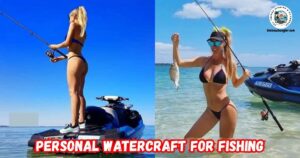
- 5 Advantages of the Penn Squall Low Profile Baitcasting Reels
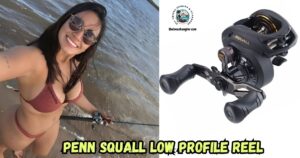
- Electronic Fish Finders For Kayak Fishing
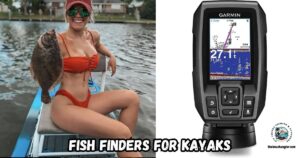
- What’s New From ICAST 2025

- 5 Budget-friendly Saltwater Fishing Kayaks For Beginners
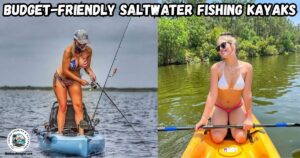
- 12 Tips for Fishing Baffin Bay, Texas
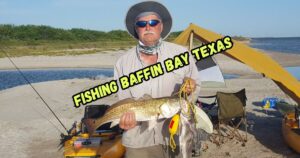
As always, stay safe, enjoy the journey, and please try to leave it cleaner than you found it. If you have any comments, questions, ideas, or suggestions, please leave them in the comment section below, and I’ll get back to you ASAP. You can follow us on Facebook: Rex The Beach Angler, Instagram: thebeachangler7, Twitter: @AnglerBeach, and YouTube: Man Art Creations.
P.S. Thanks so much for checking out our blog; we really appreciate it. Just so you know, we may receive a commission if you click on some of the links that appear on our site. This helps us keep our content free and up-to-date for everyone. We appreciate your support!
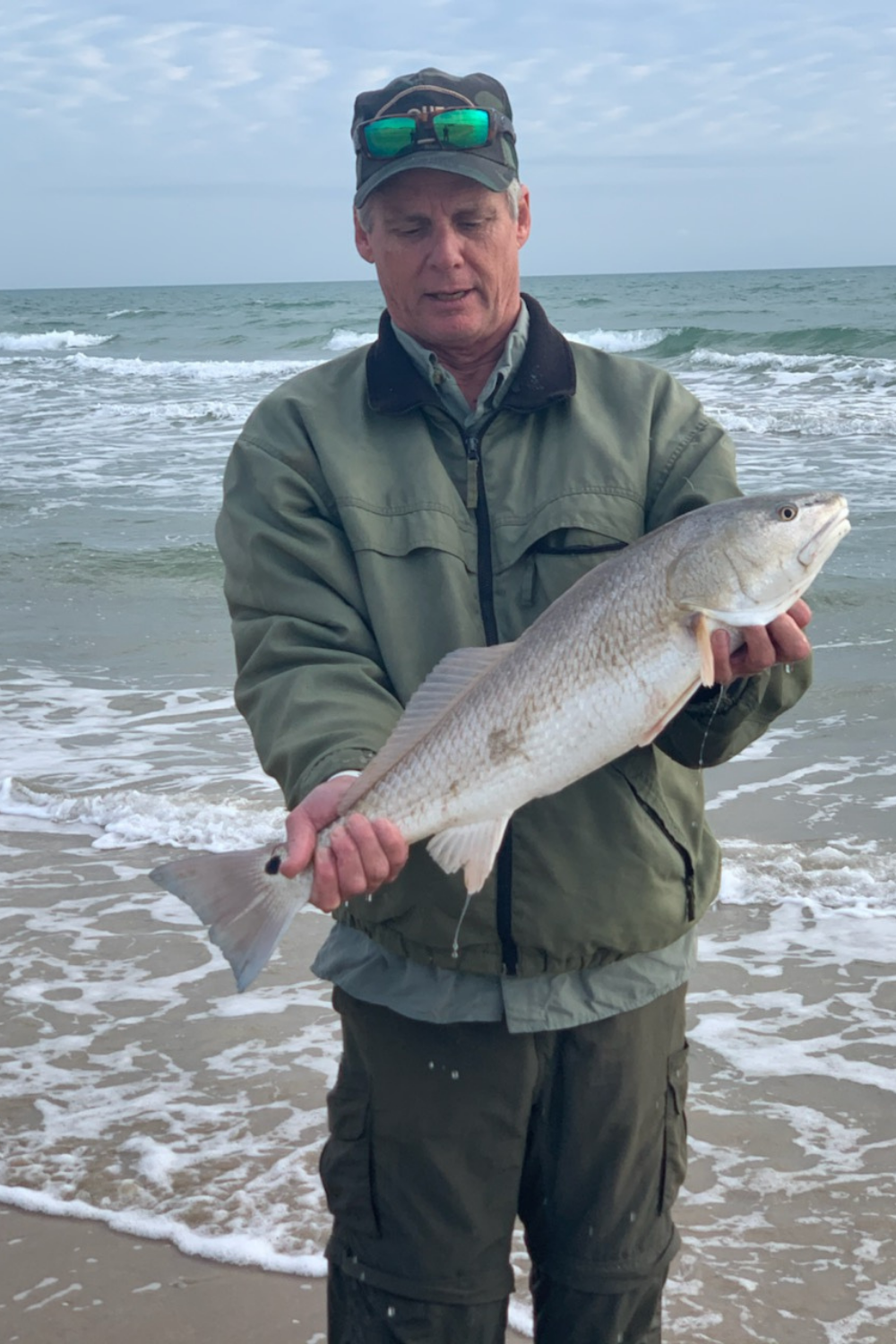
A life long surf fisherman with 50+ years of experience, I am also an avid hunter and outdoorsman. I will be sharing my passion for the outdoors with you so be prepared for hunting, fishing, camping, hiking and more. Along with gear reviews and the latest trends and innovations in the outdoor industry.
